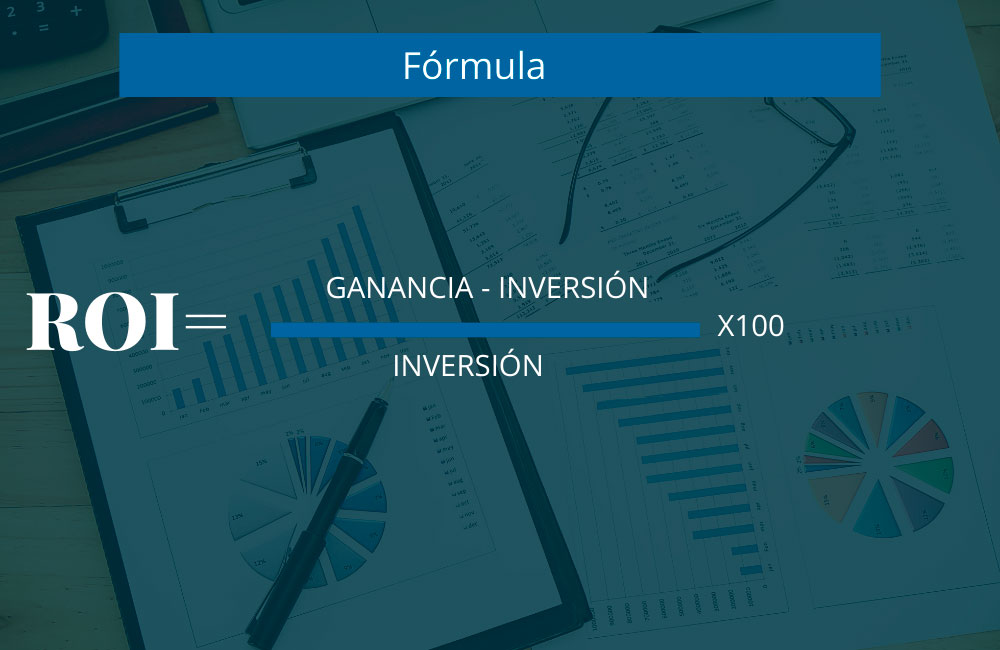In the world of marketing, achieving tangible and measurable results is essential for the success of any strategy. One of the key indicators that allows you to evaluate the effectiveness of marketing investments is ROI, or Return on Investment. Join us as we explore in detail what ROI is, how it is calculated, and why it is so important for businesses.
What is ROI?
ROI, or Return on Investment in English, refers to the relationship between the profit gained or lost and the investment made. It is a financial indicator that allows you to evaluate the profitability of an investment and determine its effectiveness in terms of generating returns.
The ROI calculation is based on a simple but powerful formula: ROI = (Profit – Investment) / Investment. The result is expressed as a percentage or ratio, which makes it easy to compare and analyze different investments.
Benefits of ROI in Marketing
ROI plays a fundamental role in both digital and traditional marketing, providing a series of key benefits for businesses and marketing professionals. Below, we explore some of these benefits:
Measuring Investment Performance
It provides a quantitative metric to evaluate the performance of marketing investments. It allows you to identify which tactics, campaigns, or strategies are generating the highest returns and which may need adjustments or improvements.
Optimizing Marketing Strategies
By knowing the return of different investments, companies can make informed decisions and optimize their marketing strategies. This involves allocating resources more effectively, focusing on tactics that offer the highest return, and eliminating those that are not profitable.
Informed Decision-Making
It provides a solid foundation for decision-making. With concrete data on investment performance, marketing professionals can support their decisions with objective evidence, increasing confidence and reducing uncertainty.
How to Calculate ROI?
Calculating ROI is based on a simple but powerful formula. Below, we present the formula and a practical example to illustrate its application:
Formula: ROI = (Profit – Investment) / Investment x 100
Suppose you invested $1,000 in an advertising campaign and generated $3,000 in sales directly from that campaign. Applying the ROI formula, we have:
ROI = ($3,000 – $1,000) / $1,000 x 100 = $2,000 / $1,000 = 200
In this example, the return on investment would be 200%, which means that for every dollar invested, you obtained $2 in profit. This indicates that the advertising campaign was profitable and generated a positive return.

Factors That Influence ROI
When calculating ROI, it is important to consider different factors that can influence the final result. Some key factors are:
Initial Investment
The amount of money invested in a marketing campaign or strategy directly impacts ROI. The higher the investment, the higher the potential returns, but also the higher the risks.
Revenue Generated
The revenue generated directly from an investment is also a determining factor. The higher the revenue return, the higher the ROI.
Investment Duration
The length of time the investment is held can also affect ROI. Generally, long-term investments are expected to generate higher returns, but it is important to consider the time required to achieve a positive return.
ROI and Advertising Campaigns
One area where ROI plays a crucial role is in evaluating advertising campaigns. Digital marketing has provided more precise tools to measure the impact of advertising strategies and calculate ROI more effectively.
By tracking metrics such as traffic, conversions, and sales generated by a campaign, it is possible to assess its effectiveness and adjust it accordingly. This metric becomes a reliable guide for making informed decisions about advertising resource allocation, providing a clear and quantifiable view of campaign performance. This allows you to evaluate its effectiveness and make necessary adjustments.
As mentioned before, this metric is based on comparing the investment made in an advertising campaign and the revenue generated directly from it. By analyzing these figures, it is possible to determine if the campaign was profitable and generated a positive return.
Additionally, continuous monitoring throughout a campaign allows for real-time adjustments. If a strategy or advertising channel is not producing the desired results, changes and optimizations can be made to improve ROI. This ensures that advertising resources are used as effectively as possible and maximizes return on investment.
Common Mistakes
Although ROI is a valuable metric, it is important to be aware of some common mistakes when interpreting it:
Ignoring Hidden Costs
When calculating ROI, it is essential to account for all costs involved, including hidden costs. Failing to include additional expenses can lead to an inaccurate estimation of real ROI.
Not Considering the Value of Time
Time should also be considered when calculating ROI. An investment that generates long-term benefits may show lower results in the short term but can be more profitable over time.
Evaluating It in Isolation
ROI should be evaluated alongside other indicators and business objectives. It should not be considered in isolation at the expense of other factors relevant to the company’s overall strategy.
ROI is a fundamental marketing metric, as it allows businesses to assess the profitability of investments and optimize strategies in an informed way. Calculating it accurately and considering the influencing factors is essential for making informed decisions and maximizing benefits.
Author: Mari Ángeles Cazorla



